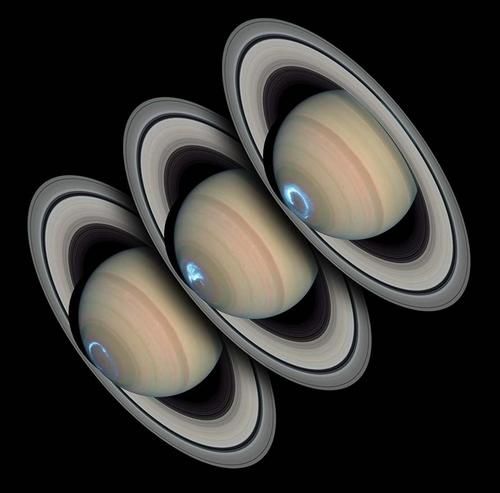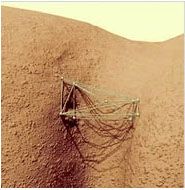Your Page Title
Code 695
Primary Research Areas

Jupiter Dynamo.
There are four primary research areas in the Planetary Magnetospheres Laboratory. They are:
1. SOLAR SYSTEM MAGNETIC FIELDS The Planetary Magnetospheres Laboratory has been the source for flight magnetometers for nearly 4 decades. Magnetometers from the this Laboratory have flown to every planet in the Solar System , including the Earth's Moon, except for Pluto. Present activities include the magnetometer and Deputy Principal Investigator on NASA's New Frontier JUNO mission to the planet Jupiter; the magnetometer lead investigator on the MESSENGER mission to the planet Mercury; the magnetometer lead on the solar STEREO mission; the principal investigator on the MGS mission which determined the nature of Mars intrinsic magnetic field, and the magnetometer lead on the Mars airplane under development at Langley Research Center.

Saturn's Aurora
2. SOLAR SYSTEM RADIO ASTRONOMY Radio Astronomy has been a key research area in the Planetary Magnetospheres Laboratory since the 1960's. The principal targeted research areas are planets and the sun together with its outer atmosphere known as the heliosphere. On going flight missions include Cassini which explores the radio environment of Saturn and the STEREO mission which uses new radio astronomy techniques to track massive eruptions known as Coronal Mass Ejections (CME's) from the solar atmosphere. The Planetary Magnetospheres Laboratory conducts world class research in CME physics. Research continues with the missions that pioneered this radio CME tracking: Ulysses, Wind, and SOHO. Path breaking radio imaging missions such as SIRA are also under development.

MGS Orbiter
3. PLANETARY DUST PHYSICS Planetary dust at the Moon and at Mars represents one of the key problems for the exploration of these bodies due to its adherence to and obstruction of surface operations. Planetary dust is also a key to understanding the formation and evolution of planetary surfaces. In the Planetary Magnetospheres Laboratory, building on the expertise in plasma interactions, research is being conducted on the nature of dust charging, which is central to dust dynamics, as well as the mitigation of dust by plasma interactions which may control not only electrostatic dust interactions but also van der Waal's force driven dust interactions. One mitigation technique developed by the laboratory is the subject of a US Government patent.

The 12-Tet rover that changes shape to navigate rough terrain.
4. SOLAR SYSTEM EXPLORATION ROBOTICS In the research of the Planetary Magnetospheres Laboratory, as in all other areas of space research, there is an increasing need for intelligence, mobility, and adaptivity. This capability has become just as important as the need to new instruments, and in some ways is more important since if the payload can not be placed and operate where it is needed, the payload's research capability is of little consequence. The ability to place complicated instruments in difficult places in a cost effective manner in which they may have to act alone or autonomously, is of increasing importance. Building on the extensive flight experience and heritage within the Planetary Magnetospheres Laboratory and previous work in support of the US High Performance Computing Initiative, A new form of space architecture has been developed which employs a synthetic skeletal-muscular system and a synthetic neural system, which when combined in a single entity offers unprecedented capabilities and plasticity in behavior. The Laboratory is presently working on advanced planetary rovers based on this tetrahedral architecture (download short QT video clip - 43MB). Both components of this architecture are the subjects of US Government patents.
